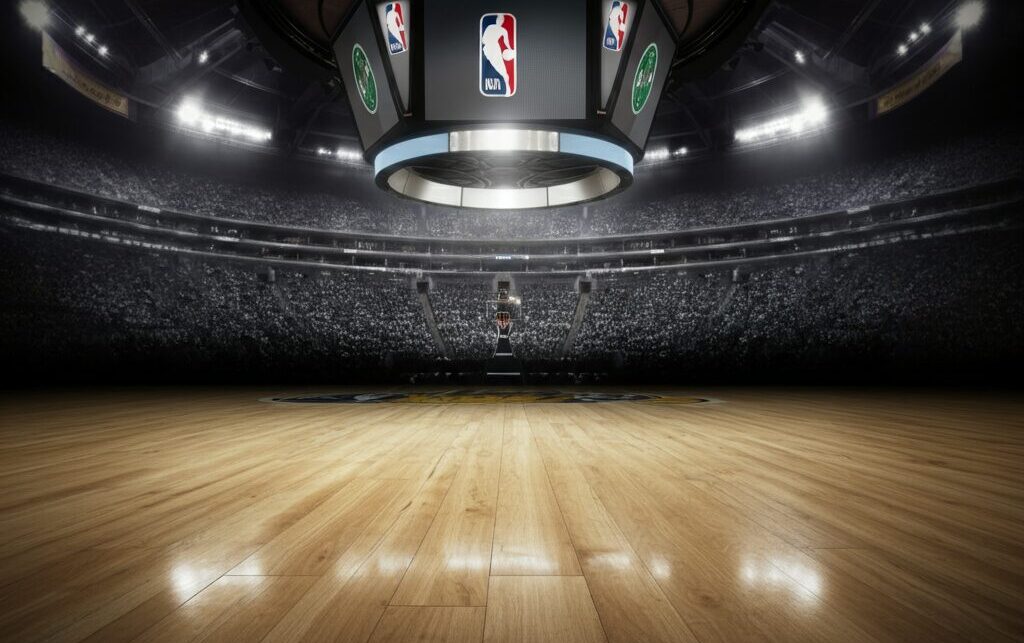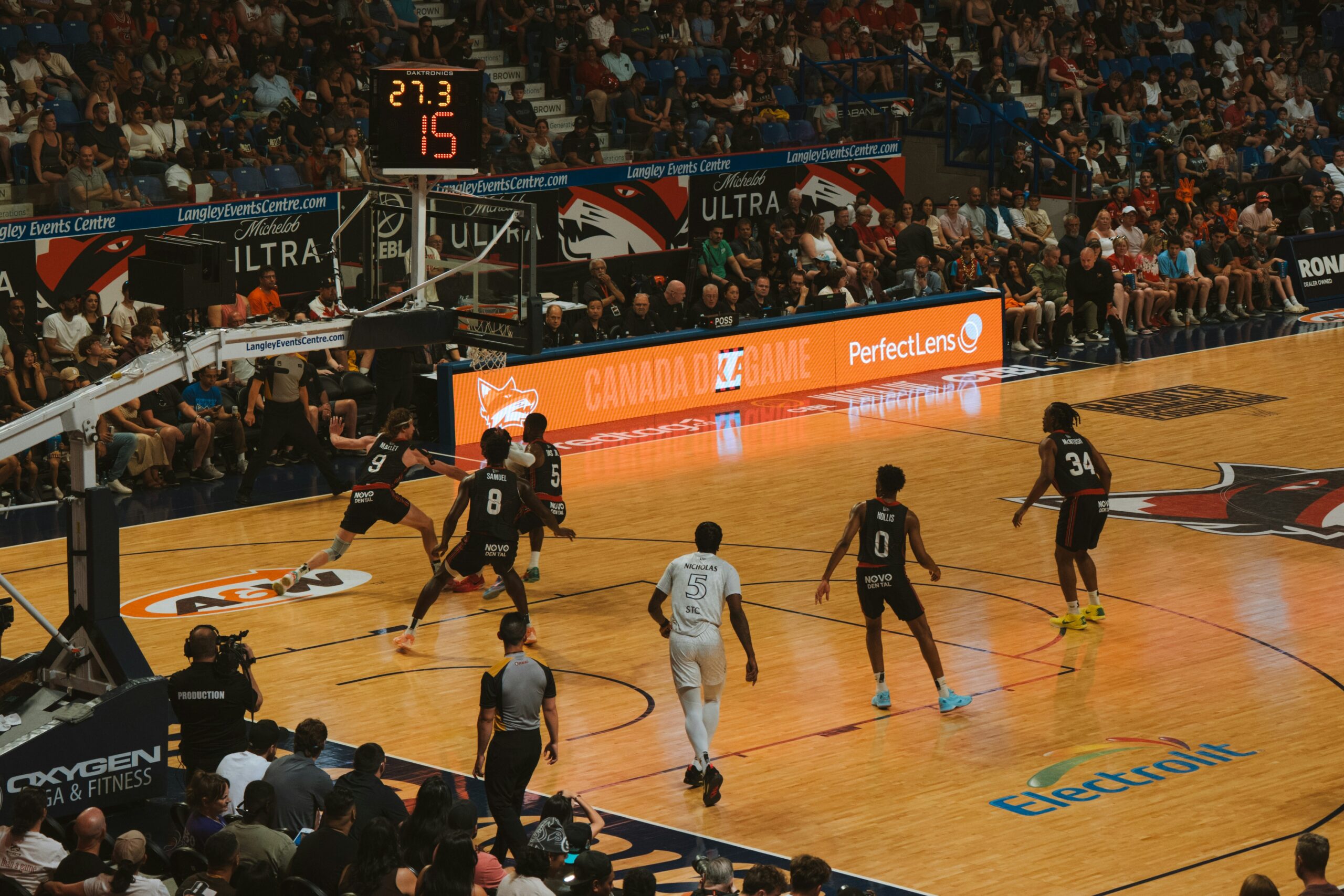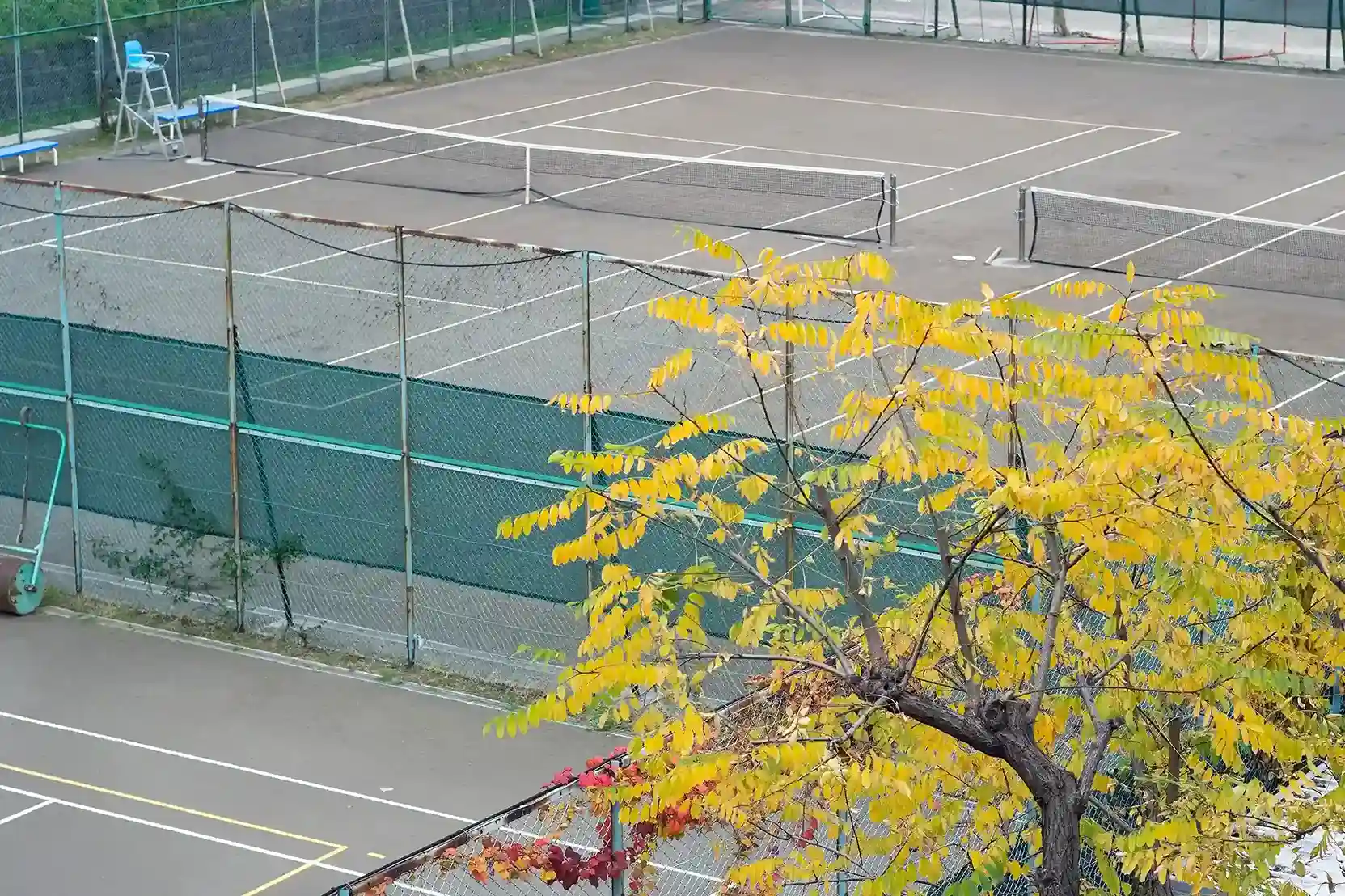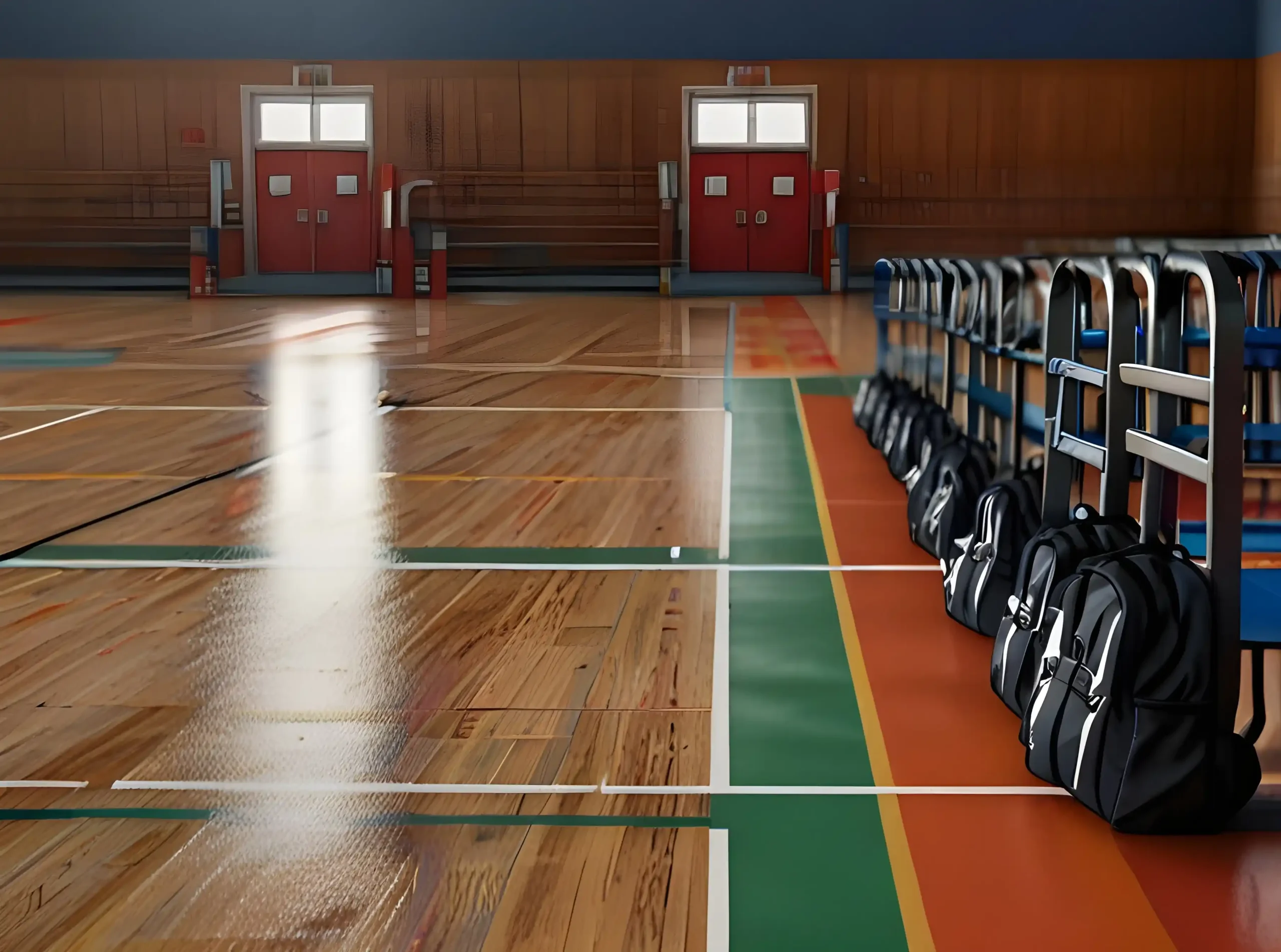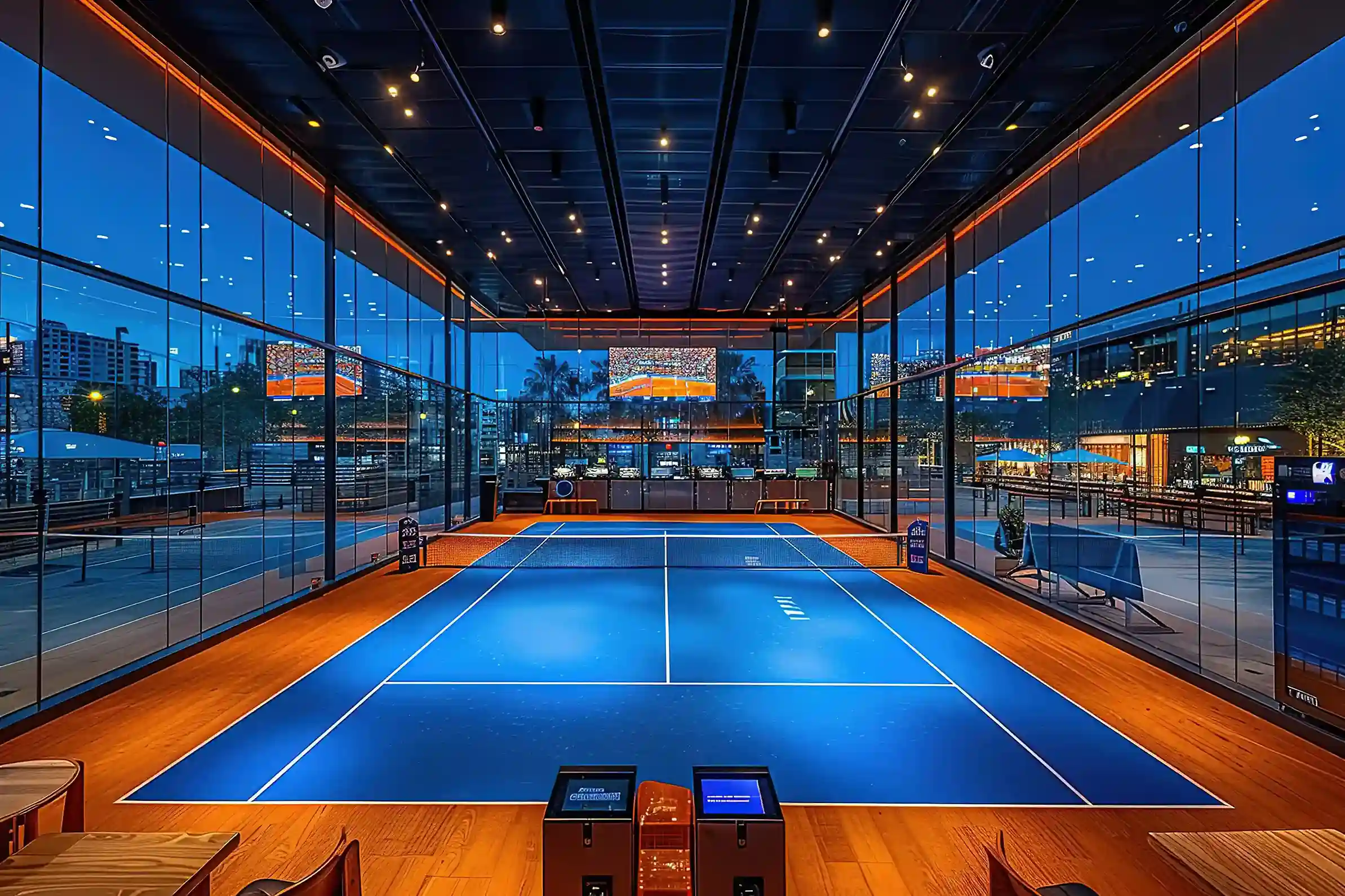When basketball first gained traction, the choice of court flooring was primarily functional. Over the years, however, basketball court flooring has evolved remarkably, merging aesthetics, safety, and performance. Among all materials, hardwood has become synonymous with premium basketball courts, from early gym floors to the iconic NBA arenas. This post takes you through the fascinating history of hardwood floors in basketball, highlighting the milestones that shaped the game, the courts, and the technology behind them.
Early Gym Floors: The Birth of Hardwood in Basketball
Why Hardwood?
At the turn of the 20th century, gyms adopted hardwood floors due to their resilience and durability. Materials like oak and maple became the standard choices, thanks to their natural ability to endure intense foot traffic without compromising performance. Unlike cement surfaces, hardwood’s slight elasticity reduced strain on athletes’ joints, making it a superior option.
Key Benefits of Early Hardwood Floors
- Durability: Withstanding prolonged use in high-traffic gymnasiums.
- Safety: Providing consistent traction and preventing injuries when compared to rougher materials.
- Maintenance Simplicity: Wood offered a surface that was easier to clean and preserve than concrete or dirt floors.
Hardwood became a staple in gyms across North America, setting the stage for its eventual rise in professional basketball leagues.
The NBA Transition to Hardwood Floors
Standardizing the NBA Experience
Professional basketball leagues, particularly the NBA, adopted hardwood flooring in the mid-20th century, ensuring uniformity across arenas. Maple emerged as the preferred hardwood for basketball courts, thanks to its tightly packed grain structure. This characteristic not only made it durable but also gave it a smooth finish that players favored.
Performance-Enhancing Developments
The NBA transitioned from basic wooden floors to more advanced designs by customizing the thickness, finish, and even the subfloor systems. These refinements improved ball bounce consistency and reduced impact forces on players.
Key Milestones in NBA Hardwood History:
- 1946: The National Basketball Association forms, standardizing the use of hardwood as the league’s preferred court material.
- 1952: Introduction of polyurethane finishes, making the courts more reflective and easier to maintain.
- 1972: Boston Celtics unveil the now-famous parquet floor, becoming one of the most iconic designs in basketball history.
Iconic NBA Courts and Their Unique Designs
Boston Celtics’ Parquet Floor
When discussing basketball flooring history, it’s impossible to overlook the Boston Celtics’ parquet. First installed in 1946, the parquet pattern not only provided structural benefits by using smaller, readily available tiles but also became synonymous with the Celtics’ game-day identity.
Staples Center and Modern Aesthetics
Venues like the Staples Center (now Crypto.com Arena) have raised the bar with stunning hardwood floors customized in team colors and ultra-high-definition branding. These designs showcase how aesthetics have become just as important as function.
Other Famous Courts:
- Madison Square Garden: Known for its uniquely illuminated floors creating a dramatic viewing experience.
- Miami Heat Court: Notable for incorporating stylized graphics into its sleek, high-performance hardwood.
Modern Flooring Technology in Basketball
Advanced Hardwood Materials
Modern basketball court flooring has evolved significantly. The focus is now on optimizing player safety, enhancing performance, and incorporating eco-friendly designs:
- Biomass Sport Wooden Flooring: Leveraging sustainable wood sources for premium court materials.
- Enhanced Shock Absorption: Modern subfloor systems are engineered to dampen vibrations, reducing player fatigue and risk of injuries.
Finishes and Maintenance
State-of-the-art urethane finishes ensure courts maintain their pristine look while offering superior slip resistance. Modern maintenance practices, such as regular sanding and resealing, extend the life of the flooring and maintain consistent playability.
Portable Floors for Multipurpose Venues
Many arenas today use portable hardwood floors that can be installed and dismantled in hours. This versatility allows venues to host different events, including ice hockey or concerts, without permanently installing fixed courts.
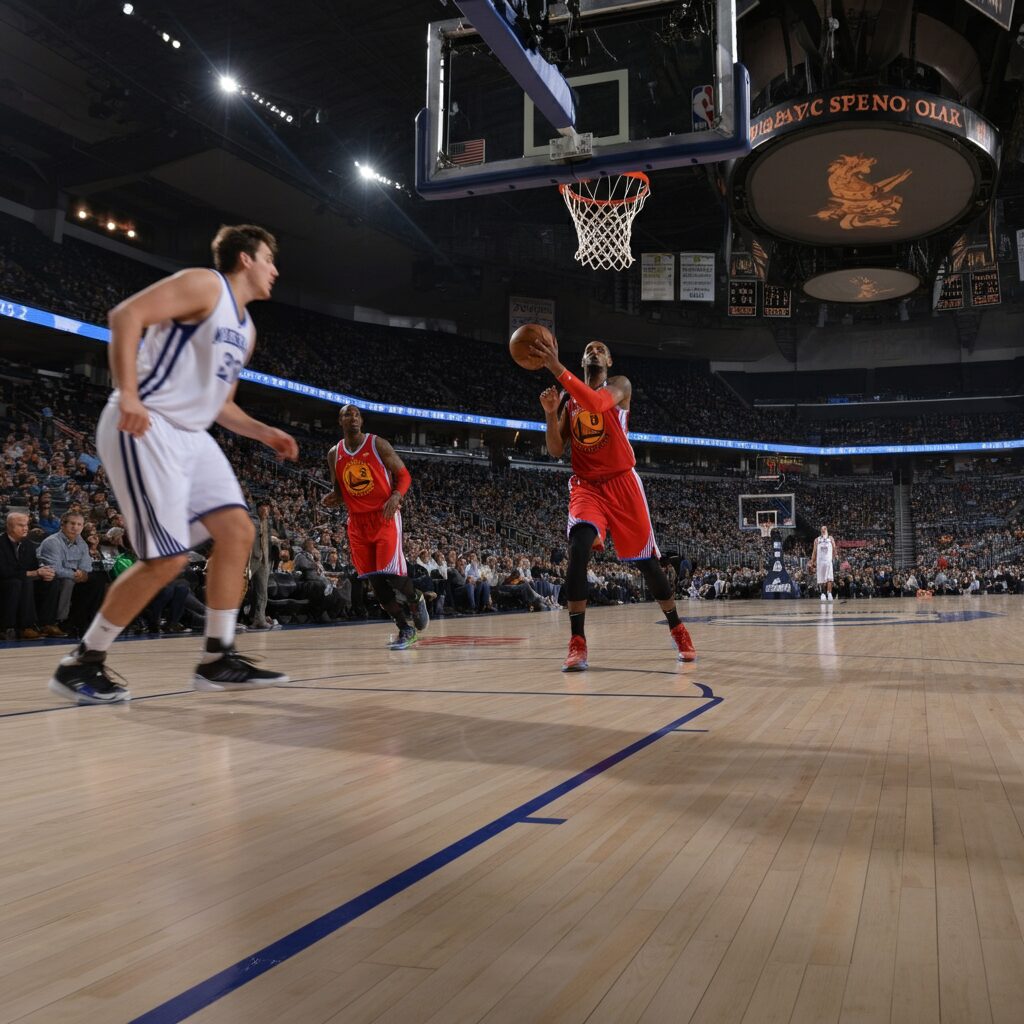

Basketball Flooring FAQs
Why is maple the preferred choice for hardwood basketball courts?
Maple offers unparalleled consistency in grain density, which translates to better ball bounce, durability, and a smooth, visually appealing finish. Its natural hardness also enhances longevity while maintaining player safety.
Are all NBA courts built the same way?
While all NBA courts adhere to strict material standards by using maple hardwood, the aesthetics and subfloor systems may vary between arenas.
How long does a hardwood basketball floor last?
With proper maintenance (sanding and resealing every 5–10 years), a high-quality hardwood basketball court can last over 50 years.
What are the dimensions of an NBA hardwood floor?
An NBA court measures 94 feet by 50 feet, with every detail—from the thickness of the wood to the markings on the court—regulated to ensure consistency.
The Lasting Impact of Hardwood Basketball Floors
Hardwood basketball court flooring has come a long way, from dusty early gyms to the polished, team-branded courts of the NBA. Beyond the beauty and history, modern advancements in materials and technology have shaped basketball into the fast-paced, visually dynamic game we see today.
For businesses, schools, and sports facilities aspiring to achieve professional-grade performance and aesthetics, premium hardwood courts offer unmatched quality. Whether you’re designing a new court or upgrading an old one, these surfaces will ensure players perform their best while retaining the beauty and longevity of traditional hardwood.
If you’re ready to invest in premium sport flooring or need guidance selecting the best materials for your space, contact us today. Our experts specialize in delivering world-class basketball flooring solutions.

